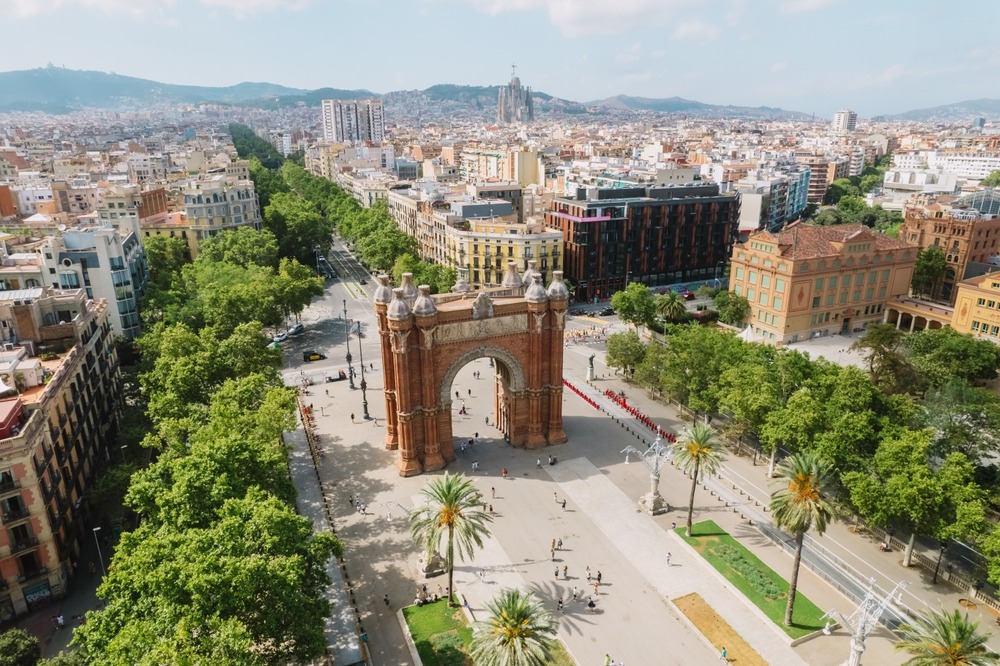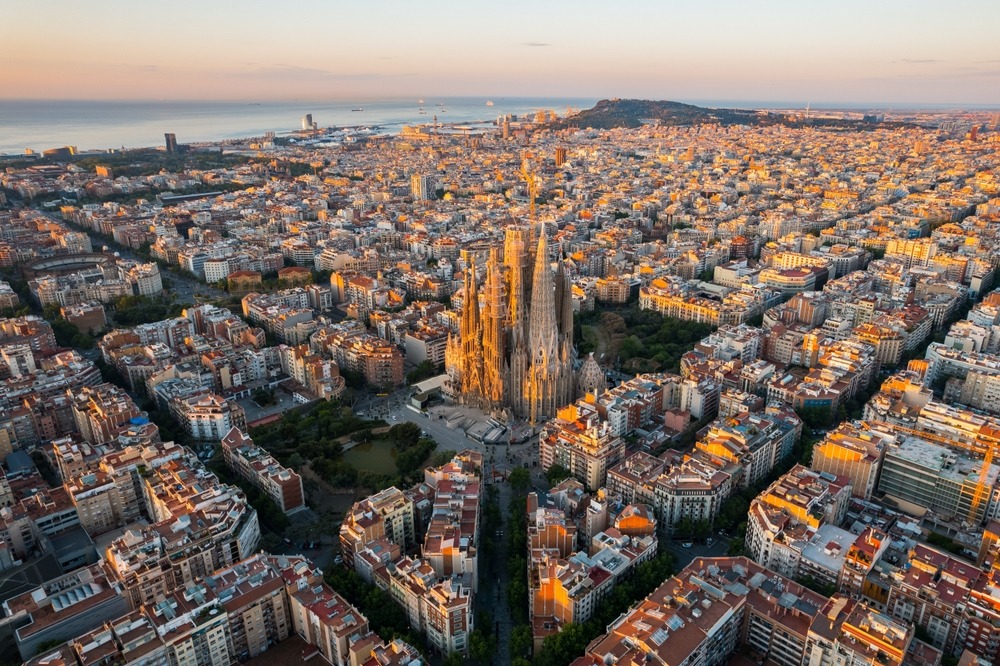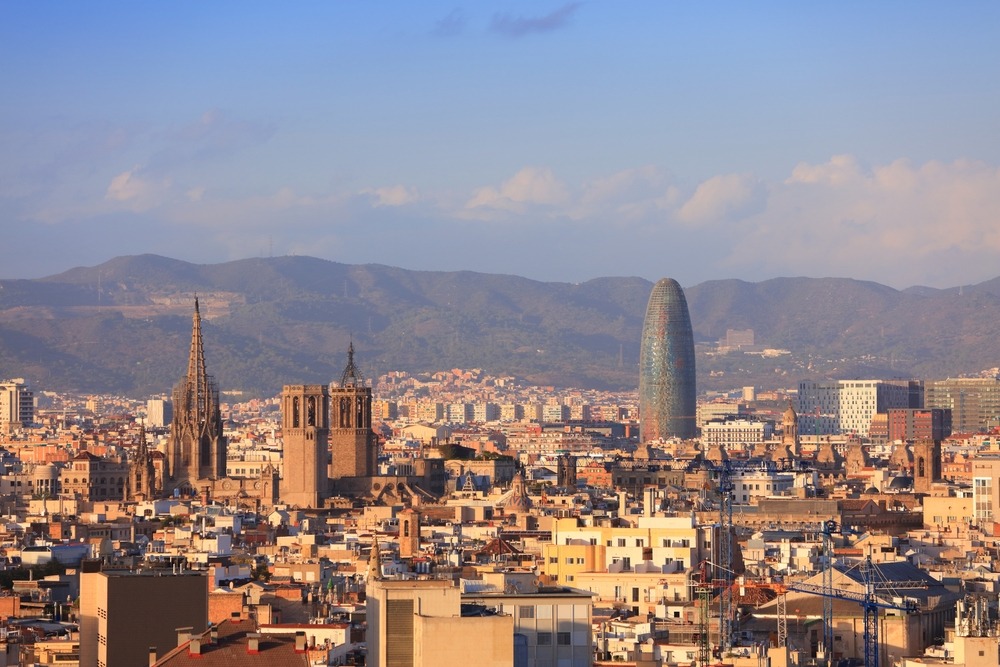The History of Barcelona, Spain and Its Top 25 Attractions
Barcelona, the capital of Catalonia and one of the most iconic cities in Spain, boasts a captivating history that stretches back over 2,000 years. Nestled between the Mediterranean Sea and the Serra de Collserola mountains, Barcelona is a vibrant tapestry of Roman heritage, Gothic grandeur, and modernist genius. With its distinctive Catalan identity, architectural marvels, and Mediterranean flair, the city continues to enchant visitors from around the globe.

A History of Barcelona
The origins of Barcelona date to the late Roman Republic. Around 15 BC, the Romans established a colony called Barcino on the site of an earlier Iberian settlement. Strategically located along the Mediterranean coast, Barcino developed into a prosperous trade hub protected by fortified Roman walls, remnants of which still exist in the Gothic Quarter.
During the early Middle Ages, the city was captured by the Visigoths and then briefly fell under Muslim control in the 8th century before being retaken by the Franks under Charlemagne’s son, Louis the Pious. It became part of the Carolingian “Spanish March,” a buffer zone between the Frankish Empire and the Muslim-controlled Iberian Peninsula. By the 10th century, the County of Barcelona had emerged as a powerful and independent Christian territory.
Barcelona flourished during the 12th and 13th centuries as the capital of the Crown of Aragon, a powerful Mediterranean empire that expanded its reach to Sicily, Naples, and parts of Greece. Maritime trade, banking, and the arts thrived, establishing Barcelona as one of Europe’s great medieval cities. The Gothic Quarter still bears the architectural legacy of this golden age.
However, the union of the crowns of Aragon and Castile in the late 15th century shifted political power to Madrid. The following centuries were marked by decline, economic struggles, and suppression of Catalan autonomy—particularly after the War of Spanish Succession in 1714, when Philip V’s forces captured the city, ending its independence.
Barcelona’s fortunes revived in the 19th century with industrialization and the rise of the Catalan Renaixença (Renaissance), a cultural and nationalist revival that reasserted Catalonia’s unique identity. The 1888 and 1929 World’s Fairs helped modernize the city, and the works of architect Antoni Gaudí transformed the urban landscape forever.
The Spanish Civil War (1936–1939) left deep scars in Barcelona, a stronghold of Republican resistance. Under Franco’s dictatorship, Catalan language and culture were heavily repressed. Only after Franco’s death in 1975 did Barcelona regain its cultural vibrancy and political freedoms.
Barcelona gained global attention with the 1992 Summer Olympics, which catalyzed an urban renaissance. Today, it is one of the world’s top travel destinations—celebrated for its artistic innovation, Mediterranean lifestyle, and strong Catalan identity.

Top 25 Attractions in Barcelona
-
La Sagrada Família – Antoni Gaudí’s unfinished masterpiece and one of the most extraordinary churches in the world. Its soaring towers and intricate façades symbolize his unique take on Gothic and Art Nouveau forms.
-
Park Güell – A whimsical park designed by Gaudí, adorned with colorful mosaics, curving benches, and imaginative architecture that captures the spirit of Catalan modernism.
-
Gothic Quarter (Barri Gòtic) – The heart of old Barcelona, filled with narrow medieval alleys, Roman ruins, hidden courtyards, and the majestic Barcelona Cathedral.
-
Casa Batlló – Another Gaudí gem, this building is famed for its skeletal balconies, dragon-scale roof, and vibrant stained glass.
-
Casa Milà (La Pedrera) – A wave-like residential building by Gaudí, notable for its undulating stone façade and surreal rooftop chimneys.
-
La Rambla – A bustling pedestrian boulevard lined with cafes, kiosks, and street performers, stretching from Plaça de Catalunya to the Columbus Monument at the harbor.
-
Boqueria Market – A sensory feast of colors, smells, and tastes, this historic food market on La Rambla is a haven for local produce, seafood, and Catalan delicacies.
-
Montjuïc Hill – A cultural and recreational area offering panoramic views, with attractions like Montjuïc Castle, the Magic Fountain, and several museums.
-
Magic Fountain of Montjuïc – A dazzling evening spectacle combining water, light, and music, originally created for the 1929 International Exposition.
-
Barcelona Cathedral (Catedral de la Santa Creu i Santa Eulàlia) – A grand Gothic church located in the Gothic Quarter, dedicated to the city’s patron saint.
-
Picasso Museum – Showcasing over 4,000 works from the artist’s early years, this museum offers insight into Pablo Picasso’s deep connection with Barcelona.
-
Palau de la Música Catalana – A UNESCO-listed concert hall and a jewel of Catalan Modernisme, designed by Lluís Domènech i Montaner.
-
Camp Nou – Home to FC Barcelona, this iconic stadium and museum is a pilgrimage site for football fans around the world.
-
Tibidabo Amusement Park – One of the oldest amusement parks in the world, located atop Mount Tibidabo with vintage rides and stunning views over the city.
-
Museu Nacional d’Art de Catalunya (MNAC) – Housed in the Palau Nacional, this museum boasts a superb collection of Romanesque and Gothic art.
-
El Born Cultural Center – A remarkable archaeological site revealing the ruins of 18th-century Barcelona, beneath a 19th-century market building.
-
Port Vell and Maremagnum – A redeveloped waterfront area with shops, restaurants, an aquarium, and striking architecture.
-
Barceloneta Beach – The city’s most famous urban beach, perfect for sunbathing, people-watching, and enjoying fresh seafood.
-
Passeig de Gràcia – A luxury shopping avenue lined with architectural masterpieces, including Gaudí’s Casa Batlló and Casa Milà.
-
Museu d’Història de Barcelona (MUHBA) – A museum network dedicated to Barcelona’s past, including Roman ruins beneath the city.
-
Sant Pau Art Nouveau Site – A former hospital complex and UNESCO World Heritage Site, showcasing stunning early 20th-century architecture.
-
Poble Espanyol – An open-air museum built for the 1929 World’s Fair, representing various Spanish regional architectural styles and crafts.
-
Parc de la Ciutadella – A lush park with a grand fountain designed by a young Gaudí, home to the Barcelona Zoo and the Catalan Parliament.
-
Columbus Monument (Mirador de Colom) – A towering monument at the foot of La Rambla honoring Christopher Columbus’ voyage to the New World.
-
Raval Neighborhood – A multicultural area known for street art, hip cafes, and the contemporary art museum MACBA.

Barcelona is a city of layers—ancient and modern, sacred and rebellious, elegant and untamed. It has preserved its Catalan soul while evolving into a global capital of design, culture, and creativity. Whether you’re exploring Roman ruins, marveling at Gaudí’s fantastical creations, enjoying tapas by the beach, or strolling through artistic neighborhoods, Barcelona invites you to discover a story that is still being written—with passion, pride, and unmistakable flair.

































